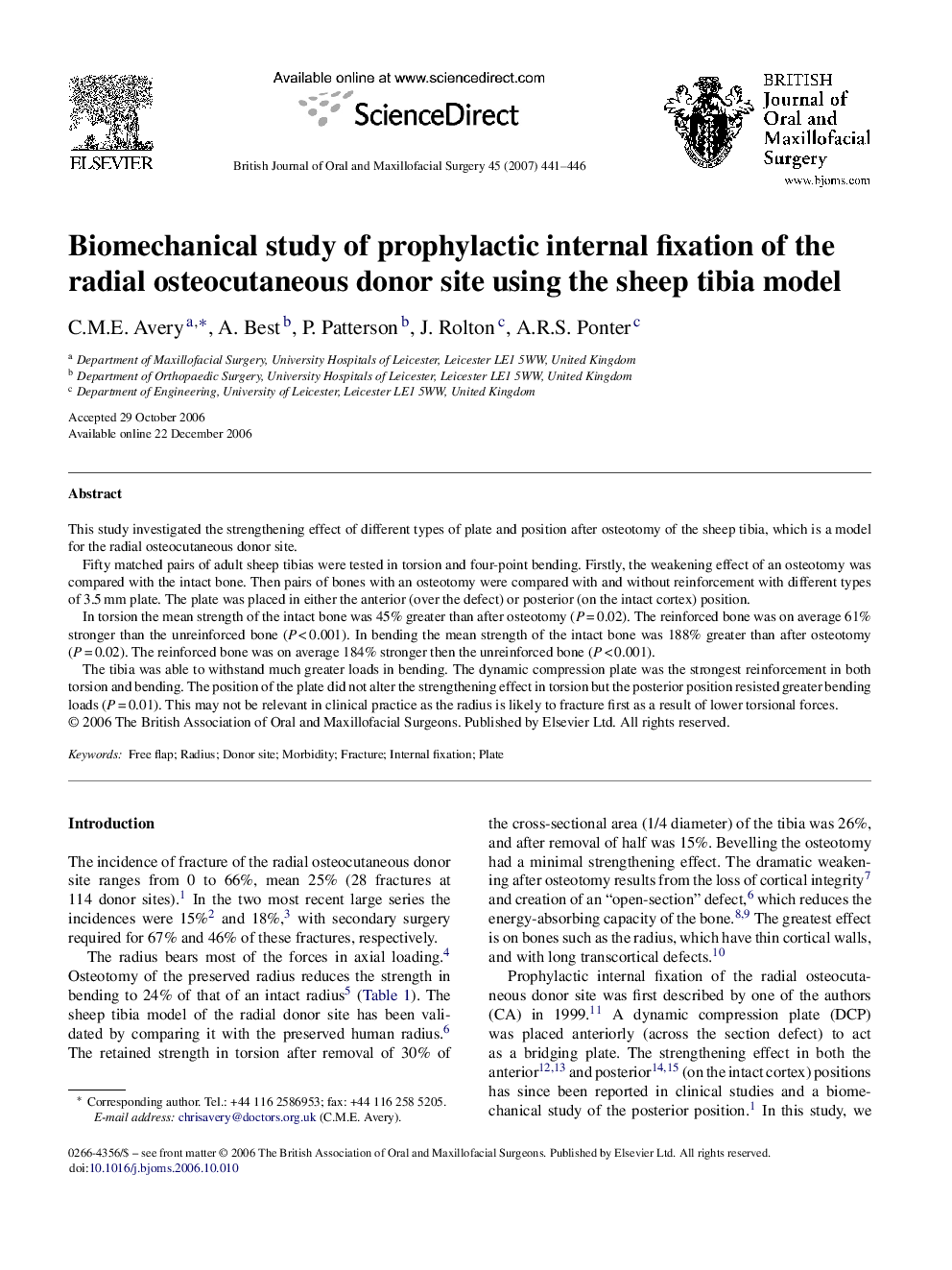| Article ID | Journal | Published Year | Pages | File Type |
|---|---|---|---|---|
| 3125895 | British Journal of Oral and Maxillofacial Surgery | 2007 | 6 Pages |
This study investigated the strengthening effect of different types of plate and position after osteotomy of the sheep tibia, which is a model for the radial osteocutaneous donor site.Fifty matched pairs of adult sheep tibias were tested in torsion and four-point bending. Firstly, the weakening effect of an osteotomy was compared with the intact bone. Then pairs of bones with an osteotomy were compared with and without reinforcement with different types of 3.5 mm plate. The plate was placed in either the anterior (over the defect) or posterior (on the intact cortex) position.In torsion the mean strength of the intact bone was 45% greater than after osteotomy (P = 0.02). The reinforced bone was on average 61% stronger than the unreinforced bone (P < 0.001). In bending the mean strength of the intact bone was 188% greater than after osteotomy (P = 0.02). The reinforced bone was on average 184% stronger then the unreinforced bone (P < 0.001).The tibia was able to withstand much greater loads in bending. The dynamic compression plate was the strongest reinforcement in both torsion and bending. The position of the plate did not alter the strengthening effect in torsion but the posterior position resisted greater bending loads (P = 0.01). This may not be relevant in clinical practice as the radius is likely to fracture first as a result of lower torsional forces.
